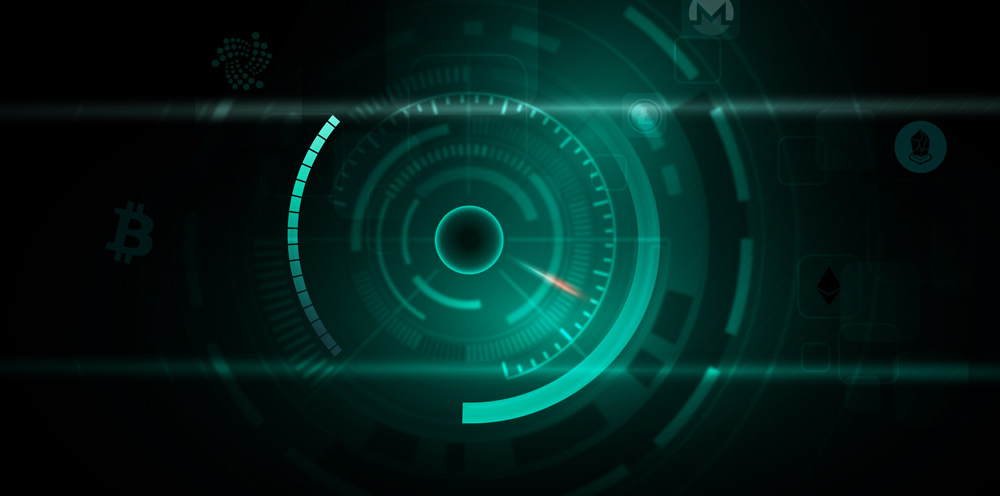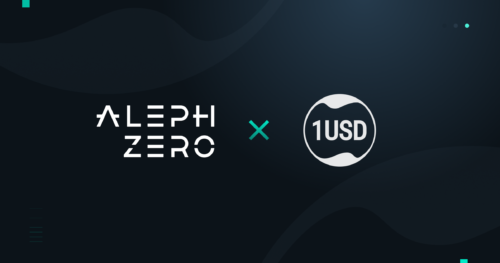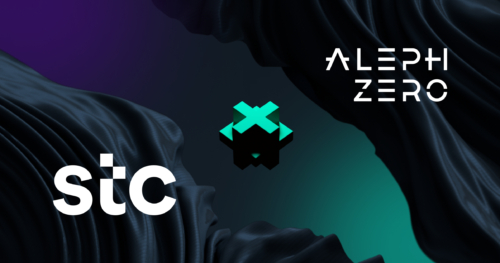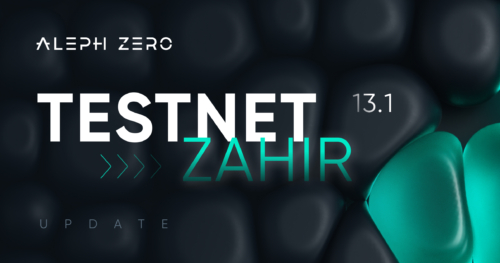What Is The Fastest Blockchain And Why? Analysis of 43 Blockchains
Jan 4, 2021

In the race to create the fastest blockchain, it seems that it’s not obvious to everyone what it actually means. Let’s shed some light In this article.
The first documented car race happened in 1867. But don’t consider it just as an immature behavior. In fact, while a car was a completely novel piece of technology, people wanted to find which is better, hence–fastest.
We invent new technology, then a few early adopters develop it in parallel, and eventually, the adventurous and curious nature that brought us from stone tools to Large Hadron Collider makes us want to check and show which solution is better. We race and set records.
We raced for the highest flight and ground speed, the highest altitude we can reach, to the Moon, and many, many more.
And what tech races are happening right now? Simple: Augmented Reality, Virtual Reality, Machine Learning/AI, and Distributed Ledger Technology.
The Use Case Race
This recent decade or two brought us some novel technologies. They were so new that they needed a use case. I mean, they had some, but for AR and VR it was only entertainment. This was a normal strategy – the entertainment can spread the tech to the mainstream public. After that, more and more companies and developers jumped on the bandwagon to use the devices for professional purposes. For example, AR is now used by Boeing for wiring their aircrafts – a task that has no room for error in its whole complexity.
It’s quite different from machine learning. This has been created to utilize computers to solve complex tasks and get better at it with every new attempt. It’s a great example of how far can we get with this use case race. First, it was a game of checkers and chess. Then, speech recognition. Now, it is used in almost every industry. Even if you didn’t know about it. We’re talking face recognition on Facebook photos, photo editing software with advanced filters, big data processors, etc.
The race is still on–who will find the best, the most exciting, and the most groundbreaking use case will bring mainstream users in. And it’s the same for our industry.
After the initial excitement about this new piece of tech with blocks and chains, we have discovered more of its flaws. Speed and scalability being the major ones. That’s why so many people teamed up to solve them–ąnd this eventually turned out to be another mass scale race. Project after project claims to be faster and faster.
A dead-end race? Not really.
Why Do We Need the Fastest Blockchain?

Blockchain is a ledger of transfers–but it doesn’t have to be only about the digital assets. It records any value (data) transfer. And this opens up many new possibilities, especially if we take down the limits of speed and scalability.
With this solved, we could get a transparent track of actions in IoT. However, this scenario consists of thousands of devices to work as one network, exchanging data constantly. Blockchain can ensure safety in this yet quite an unknown land but if it slows down the network, users will be willing to sacrifice safety for better user experience.
A similar scenario is high-frequency trading. Here, algorithms trade securities on a high-scale and at extremely high speeds. This way, the reward to risk ratio is higher but the network needs to allow to get in and out of millions of short-term positions at a fraction of second. This is something that’s impossible with the current types of digital assets.
Just as much as we can get from distributed ledger technologies, we need to be aware that as long as it will be significantly slower than centralized databases, not many users will be willing to sacrifice their user experience for better transparency and security.
There’s even scientific research to back it up. Nielsen Norman Group’s article from 1993 on application response times determines the user experience on human perceptual abilities:
- 0.1 second response limit provides the user with a feeling of system reacting instantaneously
- 1 second response limit keeps the user’s flow of thought uninterrupted, although the user will notice the delay
- 10 second response is the limit of keeping the user’s attention. Beyond this point, the user would want to perform other tasks while waiting for the system to finish the action.
That’s why, for the perfect experience of using digital assets and building decentralized applications, we need to race for the lowest latency, not necessarily the number of transactions per second alone.
100,000 TPS Is Not ‘Fast’

In 2019, we’ve seen a dramatic rise in the TPS that distributed ledgers can handle. From a dozen TPS to claims of 50,000 TPS. The projects which obviously aim at speed set a goal of reaching as high TPS as they can.
And it’s great but there are some questions that need to be answered.
- If a network can handle 50,000 TPS – in what conditions does it achieve that?
- How big are the transactions? Are they signed?
- How do we know if all of those are confirmed?
It’s easy to lower the bar in order to provide a more sensational test result. But even if it’s an early-stage test, we need to understand what the number of transactions is, first.
The more transactions the ledger can process, the more scalable it is. It means that in one second, the network can process X transactions but it’s also important to note what is specific to those transactions. If they are small and don’t require any type of signature or verification, it’s easy for them to reach high TPS but still have low security and only a few possible applications.
That’s why we need to start a conversation on the real transaction times in order to name a blockchain ‘fast’. From the user perspective, you want the transaction to happen in a split second. And you always want it, no matter how much load is on the network at the moment.
Hence, as a user, you want the lowest possible latency or verification time AND the highest possible TPS number. This is what you can call ‘fast’. Not the number of transactions per second alone.
What Is the Fastest Blockchain?
Let’s answer this frequently asked question – what is the fastest blockchain? We’ve searched through the internet to find which blockchain projects achieve the best results in terms of real transaction speed and scalability.
Here’s a list of transaction times of selected crypto from the top 100 on CoinMarketCap, excluding ERC-20 tokens as they all use the same Ethereum technology. We’ve also added some notable projects that might not be listed on CoinMarketCap. So far, we’ve checked the speed of 43 blockchains.
The numbers mentioned come from an article published on Invest in Blockchain, Kraken data and were further verified by going through project-related materials. However, if the numbers are not representative for any project, or there is a project worth mentioning, let us know, so we can keep the list up to date and as factually correct as possible.
Note: Not all projects have a goal of reaching high transaction speeds. We’re mentioning them to give a broader view of the state of transaction times in the industry.
Oldies but Goldies
A lot has been said about Bitcoin and Ethereum but when it comes to the market cap and the size of the networks, they are still the biggest players on the market.
The numbers are not in favor of these two. Bitcoin handles 7 TPS on average with about 60 minutes of confirmation time. Ethereum is much faster with 25 TPS and around 6 minutes of real transaction time. Users can cope with transactions that take too long for the sake of security but this is also what keeps the crypto industry of the size of one big corporation. And one big corporation is far from the ‘mass market’.
Averages:
Bitcoin
Throughput: 7 TPS
Transaction time: 60 min
Note: Bitcoin’s community has come up with the Lightning Network as a way of dramatically increasing the performance – bringing the BTC transaction time below one minute with 10,000 TPS. The solution is in the beta phase.
Ethereum
Throughput: 25 TPS
Transaction time: 6 min

Slow and Steady
The industry, represented by the market cap per project, seems to pay little attention to the real-life transaction times. There’s no correlation between the usability of the network and its value as we still see very slow technology in the top 10. However, we’re still not at a mass-adopted level, so the current top 10 on Coinmarketcap is not really representative.
Averages:
Litecoin
Throughput: 56 TPS
Transaction time: 30 min
Bitcoin Cash
Throughput: 300 TPS
Transaction time: 60-180 min
Bitcoin SV
Throughput: 224 TPS
Transaction time: 60 min
Monero
Throughput: 4 TPS (estimated capability of over 1,000 TPS)
Transaction time: 30 min
Tezos
Throughput: 40 TPS
Transaction time: 30 min
Zcash
Throughput: 27 TPS
Transaction time: 60 min
Decred
Throughput: 14 TPS
Transaction time: 30 min
Bitcoin Gold
Throughput: 7 TPS
Transaction time: 60 min
Ravencoin
Throughput: 116 TPS
Transaction time: 100 min
Bitcoin Diamond
Throughput: 56 TPS
Transaction time: 60 min
Tether
Throughput: –
Transaction time: 60 min (on BTC Blockchain)
Lisk
Throughput: around 25 TPS
Transaction time: 51 min
Ethereum Classic
Throughput: 15-25 TPS
Transaction time: 6 min theoretically but according to Kraken – 1 week!

Reasonably Fast
Achieving transaction confirmation time lower than 30 min is already an achievement that makes using digital assets much more friendly but still, for high-frequency purposes it might be not enough.
Averages:
Cardano
Throughput: 250 TPS
Transaction time: 10 min
Ontology
Throughput: 5300 TPS
Transaction time: 10 min
Qtum
Throughput: ~70 TPS
Transaction time: 20 min
ICON
Throughput: 9000 TPS
Transaction time: 10 min
Bytecoin
Throughput: 500 TPS
Transaction time: 20 min
Aeternity
Throughput: 100 TPS
Transaction time: 18 min
Dash
Throughput: 35 TPS
Transaction time: 6 min (15 min on Kraken)
Dogecoin
Throughput: 33 TPS
Transaction time: 6 min

5-minute Stars
5-minute transactions are already close to real-world usability but if we consider digital money as a mass means of payment for the future, it would still be too slow. For example, imagine standing at the counter for five minutes just to pay for your coffee.
Averages:
Tron
Throughput: 2000 TPS
Transaction time: 5 min
DigiByte
Throughput: 560 TPS
Transaction time: 2-3 min
BitTorrent Token
Throughput: –
Transaction time: 5 min
IOTA
Throughput: 1500 TPS
Transaction time: 1-5 min or longer

Sub-minute Heroes
You could say everything below a minute is instantly fast. But consider it similar to using the internet. Back in the day, it was normal to wait for a website to load for a while. And now? You can feel uncomfortable when the loading takes 10 seconds instead of 2. It might be similar with crypto payments.
Averages:
Ripple
Throughput: 1500 TPS
Transaction time: 4 s
EOS
Throughput: 4000 TPS
Transaction time: 1.5 s
Stellar
Throughput: 1000 TPS
Transaction time: 4 s
NEO
Throughput: 10,000 TPS
Transaction time: 15 s
NEM
Throughput: 2 TPS
Transaction time: 30 s
Waves
Throughput: 100 TPS
Transaction time: 2-10 s
Bitshares
Throughput: 3400 TPS
Transaction time: 2s
Steem
Throughput: 10,000 TPS
Transaction time: 3 s
Nano
Throughput: 1,000 TPS
Transaction time: about 0.14 s (according to NanoTicker)
Avalanche (AVA)
Throughput: 5,000+ TPS
Transaction time: 1-2s
Cosmos
Throughput: 10,000 TPS
Transaction time: ~2 s
Algorand
Throughput: 1,000 TPS
Transaction time: 45 s
Red Belly
Throughput: 14,000 TPS
Transaction time: 4s
Note: The project claims much better performance in certain conditions. However, the definition of latency is used differently – it’s the time between committed blocks.
Hashgraph
Throughput: 10,000+ TPS
Transaction time: 3-5 s
Note: Numbers from Hedera.com
Solana
Throughput: 29,000 TPS
Transaction time: 2.575 s
Note: Numbers from Solana’s blog post
Aleph Zero – the Fastest at Scale
As you’ve seen, it’s not easy for the projects to bring perfect user experience by going with the TPS to infinity and lowering the transaction confirmation times to almost instant.
It’s even harder if a project wants to keep security and decentralization. You don’t need to search long for projects that traded in the decentralization part for speed.
We believe it doesn’t have to be like that. That’s why we researched the topic heavily and eventually came up with Aleph Zero – a protocol that is the fastest at the highest scale AND secure AND decentralized.
How can we back this claim up? You’ve seen that a common goal for TPS is set at 10,000. Our consensus protocol reached 40,000 TPS.

At this extreme transaction scale, Aleph Zero’s structure allowed it to confirm transactions just after 0.6 second!
All this with security guaranteed by proprietary mechanisms and truly decentralized structure – although it’s a DAG-based protocol. We’ve carried out the tests on Amazon’s servers, with 112 nodes placed in 7 regions: 3 centers situated in Europe and 4 in the US. Each site ran 16 nodes. The test transactions were set to 300 bytes which equals the smallest transaction on Ethereum.
To learn more about how we achieved that, you can read our peer-reviewed platform paper.
Verify the numbers for yourself
We’ll set up the Testnet in Q2 2021, so you can check the speeds for yourself and are launching the Mainnet in Q3 2021.
If you wish to participate as an early contributor, fill out the form, and we’ll get back to you shortly–please note that we’re currently experiencing an extreme amount of interest, and processing the inquiries by our team might take longer.
The exact date of public sale is yet to be disclosed.
Next Stop: Adoption
Aleph Zero can bring a user experience layer to DLTs that hadn’t been seen before. With our advancements, it could help blockchain go to the next step of mass adoption, making UX problems a thing of the past. At speeds of Aleph Zero, you will finally be able to pay for your coffee in milliseconds, with top security for both parties of the transaction.
The mass adoption of blockchain follows a path similar to machine learning. It needs to become a sole driver for enterprise use cases and eventually – provide security and transparency at speeds similar to centralized solutions.
Distributed Ledger Technologies will always be slower than centralized solutions. Yet, it’s possible to make the difference invisible in the real world. And if we can do that for blockchain – that’s a home run. Not only for Aleph Zero but–more importantly–for the whole world.


